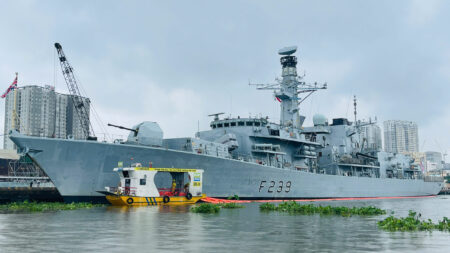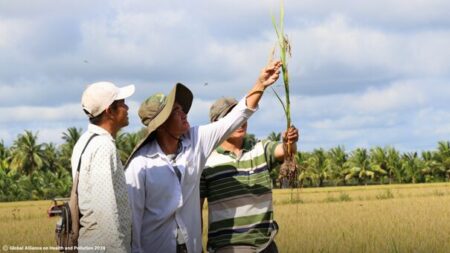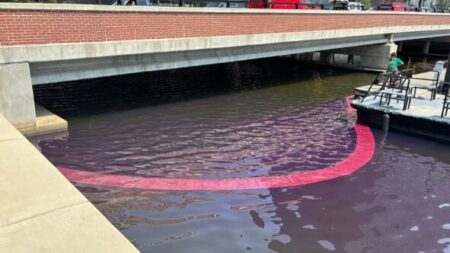THE DILEMMA AFTER THE OIL SPILL AT CAN GIO MANGROVE
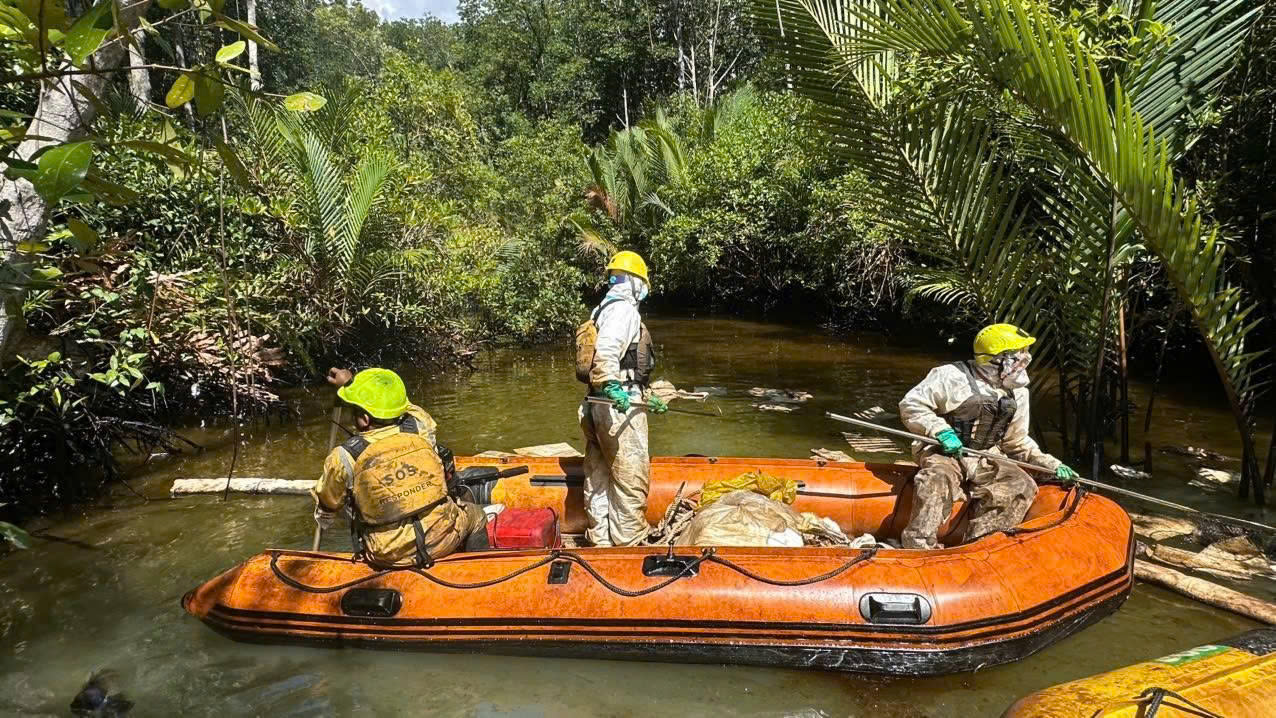
In recent years, oil spills caused by maritime activities have had a negative impact on the environment. A recent example is that on April 25, 2025, there was a collision between two cargo ships, one of Panamanian nationality and one of Hong Kong nationality, on the Long Tau River, in Can Gio District, Ho Chi Minh City.
Although emergency response measures have been implemented, damage assessment and compensation after the incident are still limited, mainly focusing on easily quantifiable economic factors such as:
• Number of dead aquatic animals in aquaculture ponds.
• Area of oil spill.
• Economic losses from fishing, tourism, and local services.
Currently assessed figures: Affected more than 30 hectares of mangrove forests and caused damage to 23 aquaculture households, with more than 4 tons of seafood affected. The current problem is that the long-term environmental impacts on the Can Gio mangrove ecosystem have not been fully, scientifically, and systematically assessed. The impacts on mangrove plants, such as mangrove, mangroves, and aquifers, or animals such as shrimp, crabs, fish, birds, insects, and microorganisms etc., have almost no quantitative data to serve ecological restoration as well as improve long-term response capacity.
It can be said that this is an opportunity to build a report to serve environmental protection work in the future. However, the insurance company of the shipowner causing the incident is not willing to pay for environmental impact assessment (EIA) activities, because they believe that this is not a mandatory part of direct damage compensation.
In addition, during the incident handling process, there are many costs that arise related to handling that the insurance company does not agree to pay, such as to avoid widespread pollution, it is necessary to take preventive measures by using additional buoys, materials, and human resources to avoid pollution. However, these costs are not approved by the insurance company.
Problem to be solved:
- Handling widespread oil spill pollution affecting the surrounding ecosystem.
- Quantitatively assessing the impacts on the ecosystem (plants, animals, soil, and water quality).
- Proposing measures for ecosystem restoration and environmental monitoring after the incident.
- Creating precedents and reference models for future environmental incidents.
Solutions:
- Field survey using modern measuring tools and biodiversity sampling in the affected area.
- Ecological impact analysis based on pre- and post-incident comparison data (if any), combined with oil spread simulation and biological recovery.
- Application of microbiological technology: Analyze changes in soil and water microflora and evaluate the self-recovery capacity and the ability to absorb and metabolize crude oil of indigenous microbial strains.
- Apply the oil spread simulation model combined with ecological analysis: Build an oil spread model based on flow, tide, and topography data of the area. Combined with interactive ecosystem analysis tools to predict ecological consequences according to each time scenario. From there, propose appropriate intervention scenarios, optimizing the efficiency of resource use.
- Prepare assessment reports for management agencies and as a basis for future insurance regulations.
- Public-private partnership model to share costs and multiply impacts: Collaborate with the incident-causing enterprise (shipowner, insurance company) to promote a co-financing mechanism for assessment – recovery; Cooperate with State programs such as the National Program on Biodiversity Protection, the Climate Change Program, the Vietnam Environmental Protection Fund to mobilize long-term resources; Connect with research organizations, universities, international organizations to exploit data sources, experts, and technical funding.
Strengths of the solution:
- Practicality: Increase awareness of environmental protection and community livelihoods, contributing to improving environmental risk management capacity for biosphere reserves.
- Feasibility in terms of resources: Can be implemented in stages: monitoring, evaluation, feedback. At the same time, mobilize many resources: State – enterprises – international organizations.
- Sustainable impact: Provide a basis for ecological restoration, enhance response capacity, improve policies, contribute to protecting biosphere reserves and local people’s livelihoods.
- Ability to apply locally: In Can Gio, there are currently research and environmental management facilities and State agencies that can coordinate. Being close to Ho Chi Minh City, it is easy to mobilize specialized human resources. In addition, this is the first biosphere reserve in Vietnam to be recognized by UNESCO, has high symbolic value, convenient for testing standardized models and proposing national policies.
- Scalability: can be applied to similar areas such as islands with coastal ecosystems, …
Limitations of the solution:
- High initial implementation costs: The use of technology and extensive surveys requires large funds, in addition to the large area affected, requiring mobilization from many sources.
- Limited baseline data on the biological status before the incident, making comparison difficult.
Expected quantification results are shown through specific numbers:
- 01 Comprehensive environmental impact assessment report after the oil spill in Can Gio mangrove forest; 01 set of GIS maps showing the level of oil spread, damaged areas, priority areas for recovery: Providing quantitative and undeniable evidence of the level of impact.
- Training to improve environmental assessment and response capacity for local officials, businesses, and communities: Improve capacity for local forces, reduce dependence on central response forces when new incidents occur. Contribute to building a community with response capacity.
- Environmental Impact Assessment Report: A comprehensive report will be prepared following the oil spill in the Can Gio mangrove forest. Additionally, a set of GIS maps will illustrate the extent of oil spread, the areas that have been damaged, and the priority zones for recovery. These documents will provide quantitative and undeniable evidence of the severity of the impact.
- Training for Local Capacity Building:Training sessions will be conducted to enhance the environmental assessment and response capabilities of local officials, businesses, and communities. This initiative aims to strengthen local resources, minimize reliance on central response teams during new incidents, and foster a community prepared for environmental challenges. We anticipate training around 200 individuals directly, while an additional 500 people will gain access to materials through documentation and online resources.
- Policy Report: A policy report will be submitted to the Ministry of Agriculture and Environment, the Maritime Administration, and insurance companies. This report aims to establish a clear legal framework regarding the responsibility of the entities causing environmental incidents, including the associated costs for Environmental Impact Assessments (EIA). This step will contribute to the long-term development of a transparent environmental insurance market.
- Testing of a Republic Model in Can Gio: A model will be tested within the Can Gio area, to make it Republic in other regions. This approach aims to expand resources, alleviate the financial burden on the state budget, and simultaneously ensure that businesses are held accountable for environmental protection. 200 people will be trained directly, and 500 people will access through documents/online.
- 01 policy report sent to the Ministry of Agriculture and Environment, the Maritime Administration, and insurance companies: Create a clear legal precedent on the responsibility of the unit causing the incident with the EIA cost, contributing in the long term to building a transparent environmental insurance market.
- 01 model tested in Can Gio, can be replicated: Expand resources, reduce the burden on the State budget, and at the same time attach business responsibility to environmental protection.
Why is the Vietnam Environmental Incident Response Center the most suitable unit?
- Many years of field experience: The Center is the leading unit in the field of responding to oil spills, toxic chemicals and environmental pollution in Vietnam, with more than 15 years of experience; has directly participated in responding to and commanding the scene to respond to more than 300 incidents in many localities nationwide; has organized more than 600 training courses on oil spill response skills – chemicals for a total of more than 25,000 students;
- Chairing many provincial and state-level topics: The Center has been chairing many provincial, ministerial, and state-level topics on environmental impact assessment, oil spill response, etc.
- Adequate resources – equipment – human resources: A network of more than 100 response stations and points has been established in the regions with specialized forces, means, equipment, materials, and a team of interdisciplinary experts (environment, biology, GIS technology).
- Extensive domestic and international cooperation: Having shared experiences at the CAFEO42 Conference, being a trusted partner of organizations such as GAHP, DEFRA, etc.
Scene image:
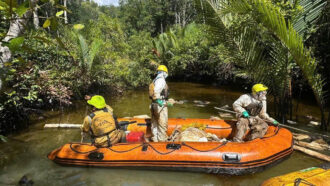
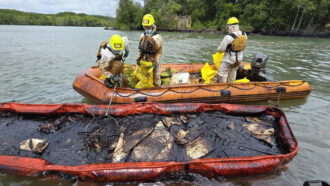
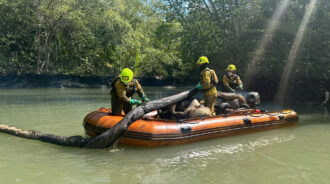
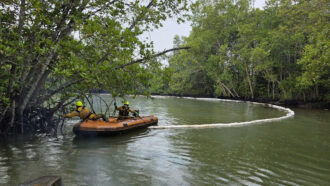
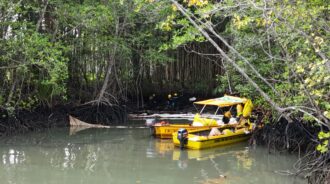
VIETNAM ENVIRONMENTAL INCIDENT RESPONSE CENTER
Address: P203 – A5, Thang Long International Village, Tran Dang Ninh street, Nghia Do ward, Hanoi.
Hotline: 1800 6558 – Email: sos@sosmoitruong.com
